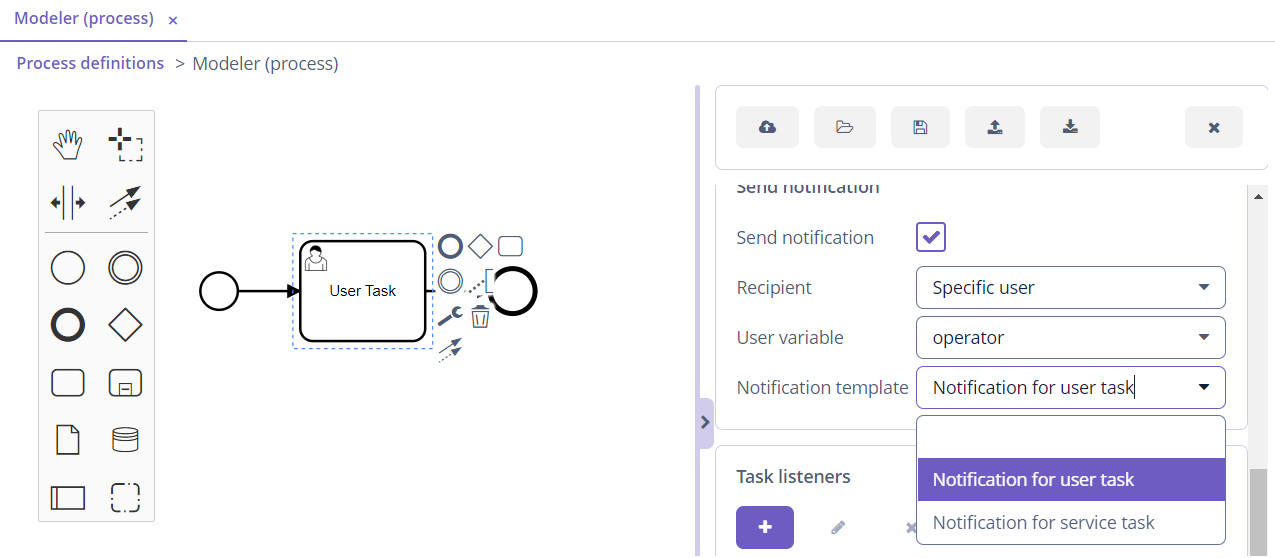Sending Notifications
The Notifications add-on can be integrated into BPM and allows sending messages for a user task and service task. Install Notifications and set the jmix.bpm.notification-sending-enabled property to true since it is disabled by default.
jmix.bpm.notification-sending-enabled=trueIn the modeler, an additional section will appear for user and service tasks.

The following properties should be set:
-
Send notifications - a checkbox should be selected to send notifications.
-
Recipient - a recipient of the notification. For a user task, you can select a task assignee as a recipient or a specific user recorded in a process variable. For a service task, only a specific user can be set as a recipient.
-
Notification template - a template for the configured notification. Setting templates is described below.
Configuring Templates
Follow the steps to create notification templates:
-
Create a JSON file containing the following information:
-
name- a template name that will be displayed in the modeler. -
code- a unique template code. -
subjectTemplatePath- a path to the template with the notification subject. -
bodyTemplatePath- a path to the template with the notification message. -
channels- a list of channels used for sending, possible values:in-appandemail. -
contentType- a content type, possible values:plainandhtml.Here is an example:
[ { "name": "Notification for user task", "code": "userNotification", "subjectTemplatePath": "ntf/default-subject-notification.txt", "bodyTemplatePath": "ntf/user-task-body-notification.txt", "channels": [ "in-app", "email" ], "contentType": "html" }, { "name": "Notification for service task", "code": "serviceNotification", "subjectTemplatePath": "ntf/default-subject-notification.txt", "bodyTemplatePath": "ntf/service-task-body-notification.txt", "channels": [ "in-app", "email" ], "contentType": "plain" } ]
-
-
Create files with the subject and body of the notification. The
subjectTemplatePathandbodyTemplatePathattributes point to a file with a specific template.The following placeholders are available at runtime:
-
context.executionId- an execution id. -
context.processDefinitionId- an id of the process definition. -
context.processDefinitionName- a name of the proces definition. -
context.processID- an id of the process. -
context.taskId- an id of the task. -
context.TaskName- a name of the task. -
context.recipientUser- a notification recipient. An entity that extendsUserDetails. -
context.taskAssigneeUser- a user assigned to the task in case of a user task. -
context.variables- all available process variables that can be accessed in Groovy format, for example,${context.variables.order.id}.Here is an example of a template with a notification body for a user task:
Dear ${context.recipientUser.username}, You email ${context.recipientUser.email} is used to reach needed person. Your subordinate ${context.taskAssigneeUser.username} has one assigned task with name ${context.taskName} and id ${context.taskId}. Please take into account that process ${context.processDefinitionName} is very important for our business practice.
-
-
Set the path to the template JSON file in
application.properties. The default value isnotifications/notification-templates.json.jmix.bpm.notification-templates-path=/ntf/ntf-templates.json